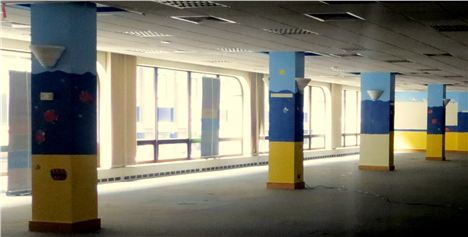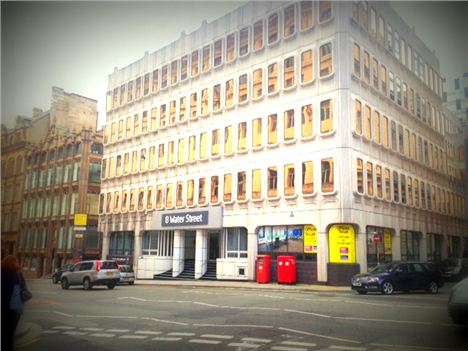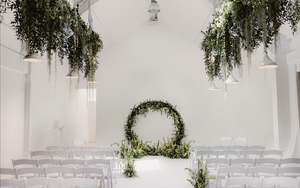IN the past fortnight two very different events have demonstrated the strange volatility of the world of Liverpool property.
Few in the city have grasped how far property is the key to so much which affects Liverpool’s present and future prosperity. The arts and culture, housing, business, regeneration, tourism are all underpinned by issues of property management and development. If we can get property right the rest will be free to flourish.
Raise your eyes above the shop-fronts and it’s clear that Liverpool’s historic business district is empty, a mere shell containing millions of square feet of unoccupied office space
The first event suggests we are getting property wrong: the sudden, but not wholly unanticipated, closure of Mello Mello.
This wasn’t simply the closure of a much-loved café-bar but of the whole building, and with it the base for a cluster of small but vital organisations and their studios and offices.
The financial writing had been on the wall for many of the independent businesses in the Ropewalks area since the properties once owned by the defunct Frensons company were this year bought up by developers - and the inexorable conversion to flats, bars and retail is now under way.
Today Mello Mello, tomorrow some established music venues and a host of artists’ studios - redeveloped and unaffordable. If Ropewalks was the most squattable area of Liverpool city centre that is all changing and within two years much will be unrecognisable to the free spirits who use the area now.
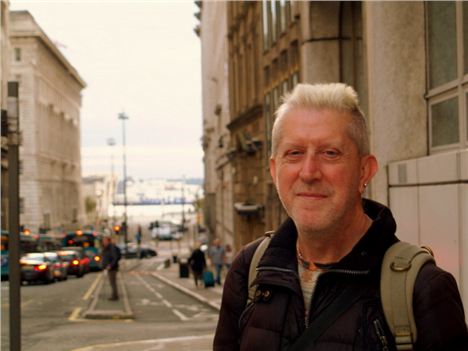 You can always go... Downtown: Broadcaster Roger Hill, presenter of BBC's Popular Music Show, among many other things, leads the way for the culturally dispossessed as money does the talking in the Ropewalks and Baltic zones
You can always go... Downtown: Broadcaster Roger Hill, presenter of BBC's Popular Music Show, among many other things, leads the way for the culturally dispossessed as money does the talking in the Ropewalks and Baltic zones
A while back, the official remedy for such a forced evacuation was obvious – The Baltic Triangle. A bit further out of town but the same informal, affordable vibe, was the notion. But who would suggest that now?
The Baltic zone, it could be said, is the victim of its own success or hype, but, increasingly, the affordable options there are few and far between. A ten-minute walk from the centre it may be, and connected by a small bus service, but its night-time ambience is not pedestrian-friendly. In between the music venues, there is almost nothing to generate a lively and sociable street-scene.
For digital and media start-ups, the Baltic Triangle may have been a godsend, but not for the impoverished artists, the informal creative enterprises and the motley individuals needing space to work out ideas and try out new, or old, ways of making cultural gestures which pay the rent.
You will notice the lack of statistics in this article. Who has reported on these matters? Who has the figures for rents and occupancy? Who knows which developers are making money out of which properties? Liverpool Vision may know, and a few journalists have made inroads into publicising the world of deals and leases and policy-free-for-alls, but for most of the public the situation is far from transparent, and in the meantime it’s the hopeful culturals who are being victimised.
Which brings us to the city’s business district and the other significant event of recent times. If much of Liverpool’s central area is For Sale, most of the business district is To Let. You don’t have to wander far from Liverpool One to notice the number of To Let signs everywhere. We have become used, since even before the 2008 crash, to seeing empty shops in the city centre but raise your eyes above the shop-fronts and it’s clear that Liverpool’s historic business district is empty, a mere shell containing millions of square feet of unoccupied office space.
Again, who has the statistics? It’s not a good advertisement for a city earnestly pursuing regeneration to publicise the vacancy at the heart of its collection of historic and listed commercial buildings. And why should we care?
 Clockwatching on the 4th floorOne person prepared to care is Colin Sinclair Director of Property Marketing at Bruntwood the property company who, at a breakfast meeting during this summer’s International Festival of Business, declared an intention to confer with Joe Anderson about creating a working party to tackle the problem.
Clockwatching on the 4th floorOne person prepared to care is Colin Sinclair Director of Property Marketing at Bruntwood the property company who, at a breakfast meeting during this summer’s International Festival of Business, declared an intention to confer with Joe Anderson about creating a working party to tackle the problem.
And the problem is that the kinds of businesses and headquarters organisations who once needed large office suites and a central space for 100+ employees have moved out of the city centre - and often the city altogether - to business parks where the car-parking is easy and free and where accommodation is ready and waiting in architecturally-neutral sheds built for 21st century office practice.
It’s easier and more economical to do that than to convert a huge listed building, and who needs to be in a city centre for business purposes these days anyway? The result? Well, have you been caught up in Liverpool’s city centre rush-hour recently? Of course not – there isn’t one. Barcelona, Tokyo, Seattle – you have nothing to fear from Liverpool’s downtown. Water Street is almost deserted at five o’clock.
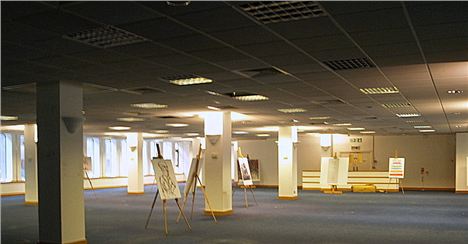 Blank canvas: 8 Water Street, built in 1973, is about to get a radical new use
Blank canvas: 8 Water Street, built in 1973, is about to get a radical new use
Ah, yes, Water Street. Next time you’re down that way cast your eyes over Number 8, formerly Norwich House, the headquarters of Norwich Union (now Aviva, and occupying a small frontal suite on the first floor of the building). It’s a 1973 building which made a fair go of fitting in amongst the older blocks and harmonising with the famously radical Oriel Chambers next door. 8 Water Street has been largely empty for a long time, housing just three firms in barely a tenth of its available space – but now the artists have arrived!
In a rent-free arrangement, sponsored by the national artist-led disability organisation SHAPE Arts, a group of local artists have taken on the responsibility of filling the building’s empty spaces with cultural, arts and charitable activities. The If Only… collective of performing artists, of which I am a member, is seeking to re-populate the spaces of 8 Water Street with painters, dancers, musicians and organisations which support marginal and minority groups through cultural activity - and the “hopeful culturals”.
None of this use will be entirely free, but nor will it be at commercial rates. Costs will be covered, that is all. If Only… have been most noticeable in the last few years for their unconventional events at The Bluecoat climaxing last year in “Occupy” which took over the arts centre’s Gallery 3 for a short season of debate and performance, improvisation, interaction and exhibition. Now, however, the much bigger task is to turn a largely-empty office-block into a thriving focus for as many of the culturally dispossessed and the enterprisingly creative as possible.
We held our first open nght recently. In every sense, watch this space.
Want to get involved?
OUR vision is for 8 Water St is to enliven the cultural ecology of the city by providing performance opportunities, rehearsal space, dance studios, a hot-desking area, meeting spaces, exhibition space, treatment rooms, artists’ studios, performance laboratories, craft activities, photographic studios, equipment storage and filming opportunities at low cost as well as providing local charities with free access to the facilities.
To find out more about If Only… and its plans for 8 Water Street please E-Mail ifonlyperformance@gmail.com and we will put you on our mailing list. Use that address to find out when the building’s spaces can be viewed and for proposals for use of the spaces or occupancy of one of the smaller office areas.





